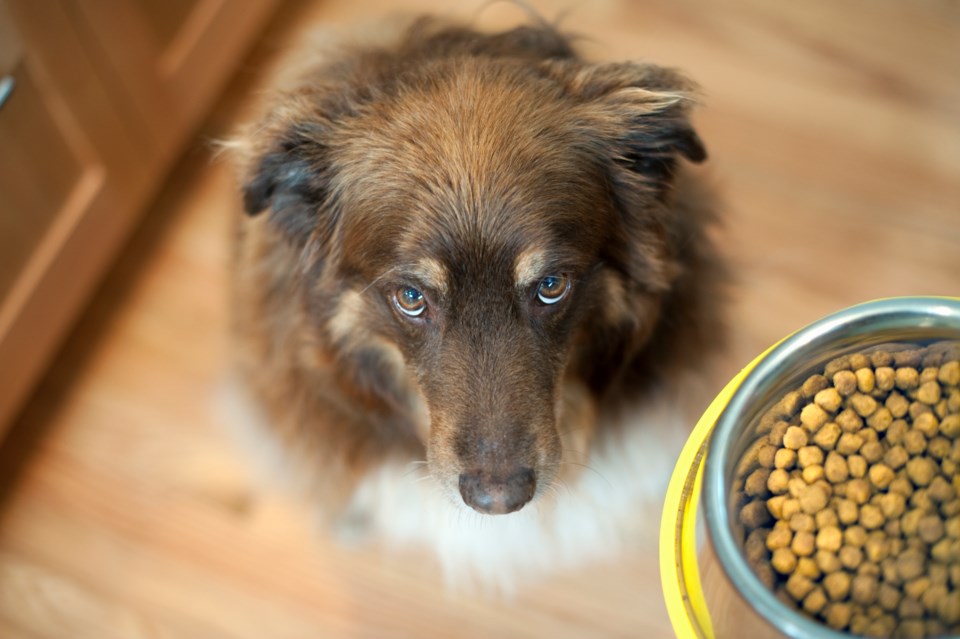Staying healthy and fit is just as important for dogs as it is for humans. The growing popularity of natural pet food and homemade treats suggests that pet parents are becoming more mindful of what is healthy for their animal pals. On a global scale, the organic and natural pet food market has become a $22.8 billion industry.
Using research from various studies and internet resources, Native Pet compiled a list of 10 superfoods found in most kitchens that can double as healthy snacks for dogs and their people.
In the U.S., according to the latest data available from the U.S. Bureau of Economic Analysis, pet owners in the U.S. spent more than $118 billion on their pets in 2020, and the American Pet Products Association, an industry trade group, estimates even more growth took place in 2021, with the industry cresting $123 billion. APPA found dog owners spend about $287 on average on pet food per year.
But not all foods are the same—sometimes dogs need a little extra something to keep their diet healthy. “Superfoods,” or foods that are nutrient-rich, have gained popularity in the 21st century, with the global market projected to reach about $215 billion by 2027, according to Mordor Intelligence, a market research firm.
While there is no scientific definition of a superfood, they are generally believed to promote health or prevent disease because of high levels of antioxidants, fiber, or other nutritional benefits, according to Cleveland Clinic, a nonprofit American academic medical center. These foods can supplement a nutrient-deficient diet or serve as a delightful treat. However, even with nutritious “superfoods,” moderation is essential. The 10% rule, which states that treats should account for no more than 10% of your dog’s daily calories, is a good rule of thumb to follow.
Read on for 10 superfoods from your own kitchen that dogs can enjoy.
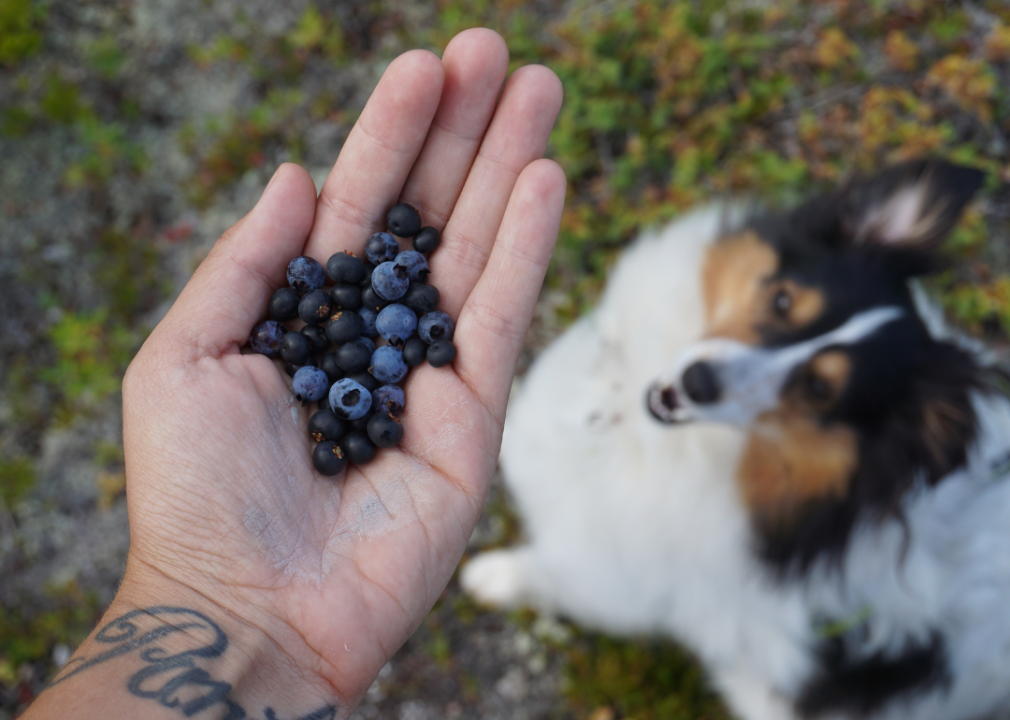
Ramblin Dawgs // Shutterstock
Blueberries
These delightfully juicy berries are rich in minerals and vitamins, low in calories, and high in fiber. They also have one of the highest levels of antioxidants among most of the commonly consumed fruits in the U.S.
Blueberries are great treats but should be moderated. The amount dog owners give to their pets depends on the dog’s size. For small dogs, 10 blueberries is an appropriate amount. Larger dogs can have more, but the 10% rule should be followed.
Because blueberries are so small, a big dog can easily eat too many of them. They often tend to swallow food without chewing, and this can result in stomach pain or create a choking hazard. If the berries are gulped down or fed frozen, little dogs can choke, too. Hand-feeding can slow them down and help prevent choking.
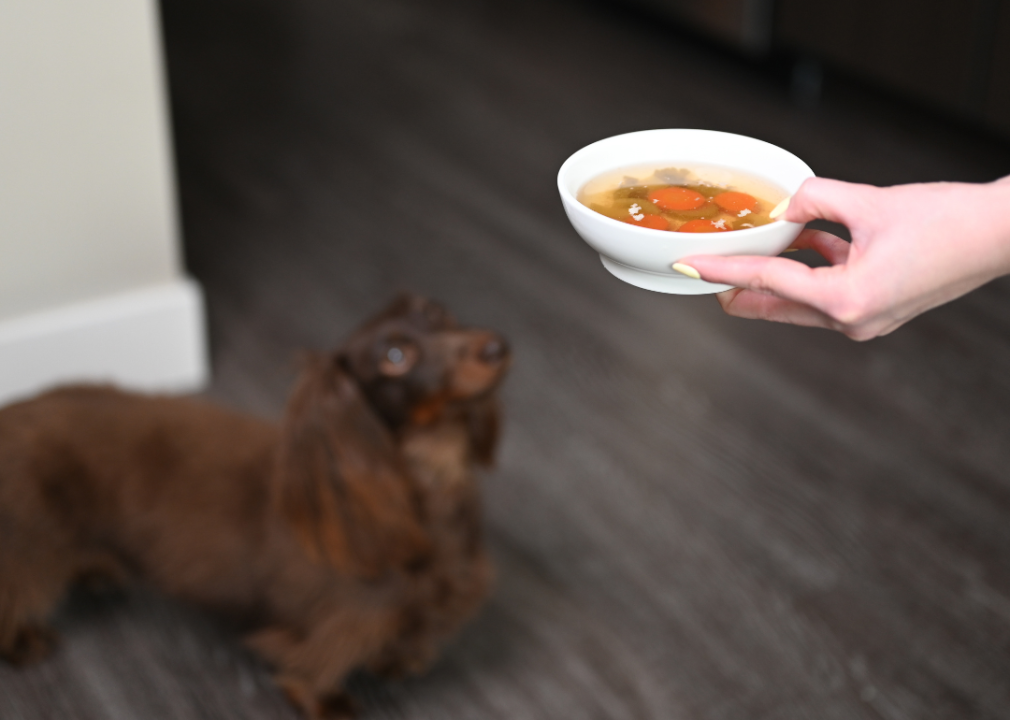
Courtesy of Anya Grunewald
Bone broth
Humans enjoy bone broth, and it’s also gaining popularity in the dog world. This nutrient-dense broth is a great source of collagen, a protein found in the connective tissues of animal bones that aids in regenerating skin, hair, joints, and leaky gut. It is also rich in vitamins, minerals, glycine, and glucosamine.
A healthy serving of bone broth is 1 ounce of broth for every 10 pounds of a dog’s body weight. For example, a single serving size for a 100-pound dog is 10 ounces, and your pet can have as many as two portions daily. Dog owners can serve it as an afternoon snack or pour it over the dog’s meal.
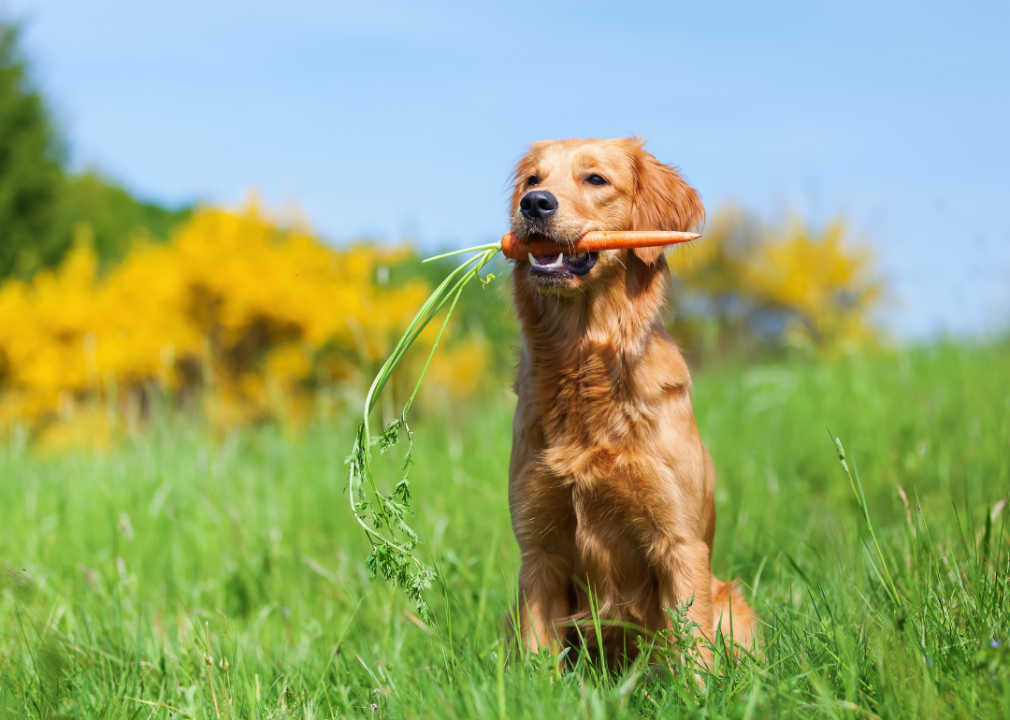
Christian Mueller // Shutterstock
Carrots
Carrots are low-fat and low-calorie treats rich in vitamin A, potassium, and fiber, among other vitamins. Like other vegetables and fruits, they contain natural sugar, and too much sugar can result in obesity and dental decay. They also contain high levels of fiber, which, if introduced too quickly, can cause an upset stomach.
It’s advisable for dog owners to introduce this treat slowly and provide enough drinking water. Carrots, like other treats, should make up less than 10% of your pup’s daily calorie intake. An average-sized dog can safely consume two or three baby carrots per day. These carrots should be cleaned and peeled to remove any dirt or pesticides, and they should be chopped into bite-sized pieces to reduce choking hazards.
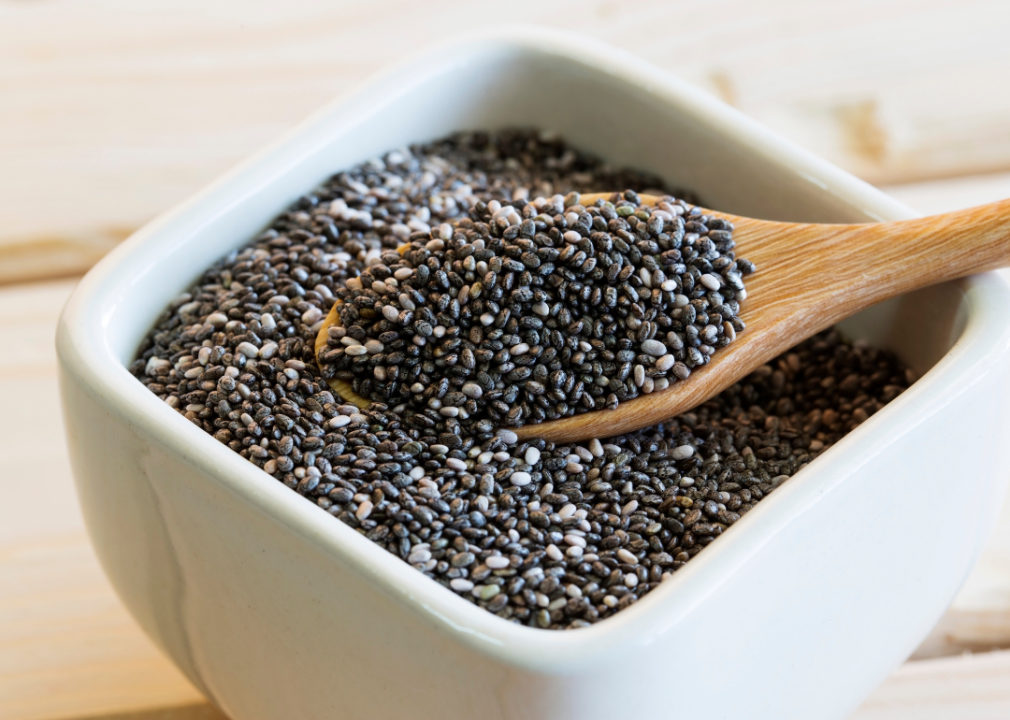
Canva
Chia seeds
Chia seeds have become one of the hottest superfoods in the world. These tiny seeds are packed with many beneficial nutrients. Dogs only need a small amount: 1/4 teaspoon daily per 10 pounds of body weight is a healthy serving for a fido.
Chia seeds’ mild taste and smell make them appealing to dogs, even the picky ones. They are high in omega-3 fatty acids, antioxidants, and fiber, and are a good source of several vital minerals. These seeds aid brain function, help dogs develop strong and healthy bones, reduce inflammation, and keep their coat healthy and shiny.
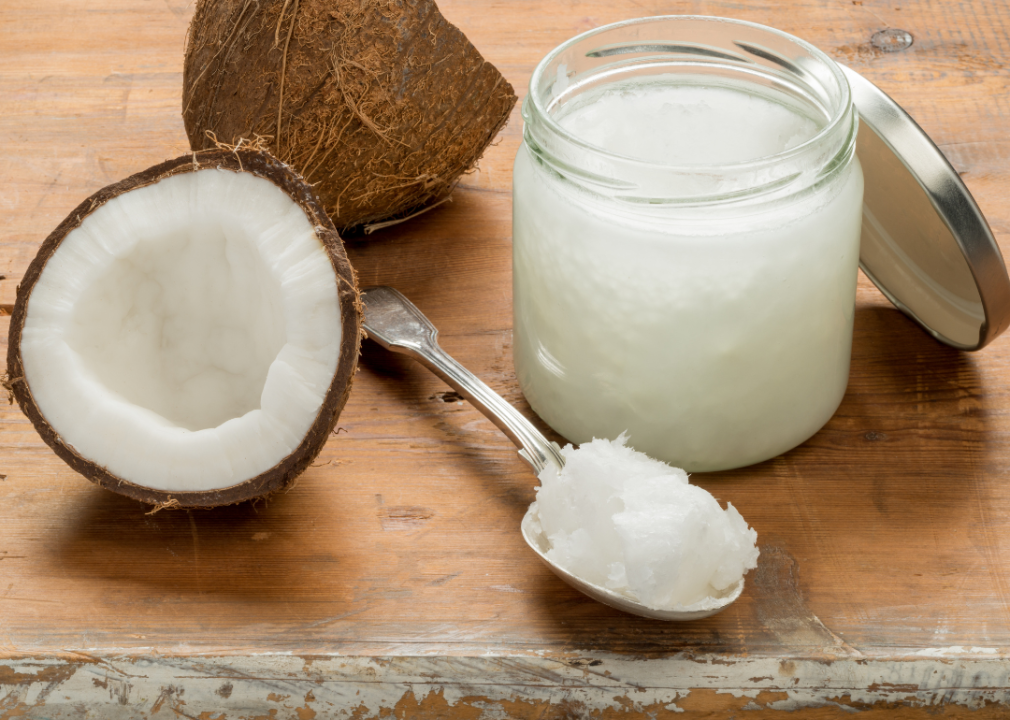
Canva
Coconut oil
Like blueberries and chia seeds, coconut oil has become popular as a superfood for humans. Still, there’s some controversy on whether it’s everything it claims to be.
In dogs, coconut oil can boost energy levels, aid digestion, reduce allergic reactions, and improve the dog’s skin. Coconut oil should be given to dogs one to two times per day with meals, and the dog’s size should determine how much is given.
Veterinarians suggest a starting dose of 1/4 teaspoon for small dogs and 1 tablespoon for big dogs. After two weeks, if your dog tolerates it well, it can be increased to 1 teaspoon per 10 pounds. The wonderful thing about coconut oil is its adaptability. Since it can be given orally, dog owners don’t have to worry if dogs lick themselves after it has been applied.
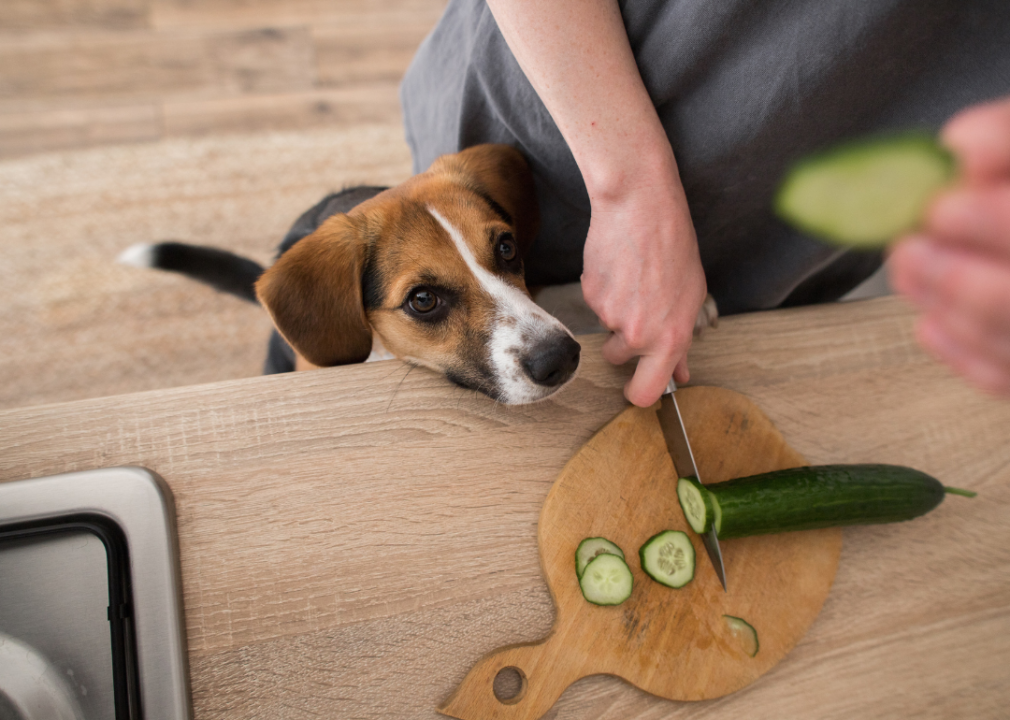
Viktoriia Bu // Shutterstock
Cucumbers
Cucumbers contain vitamins A and K, potassium, and magnesium, all of which are essential components of a healthy canine diet. Cucumbers can help eliminate dogs’ bad breath and keep their bones, kidneys, and liver strong and healthy.
They are also low-calorie vegetables made up of 95% water. One cup of chopped cucumbers contains around 16 calories, making cucumbers a great option for dogs that need to lose weight. While feeding your dog cucumber is perfectly safe, it’s best to stick with the 10% rule to avoid an upset digestive system. This crunchy vegetable is a tasty and hydrating summer treat after a vigorous walk.
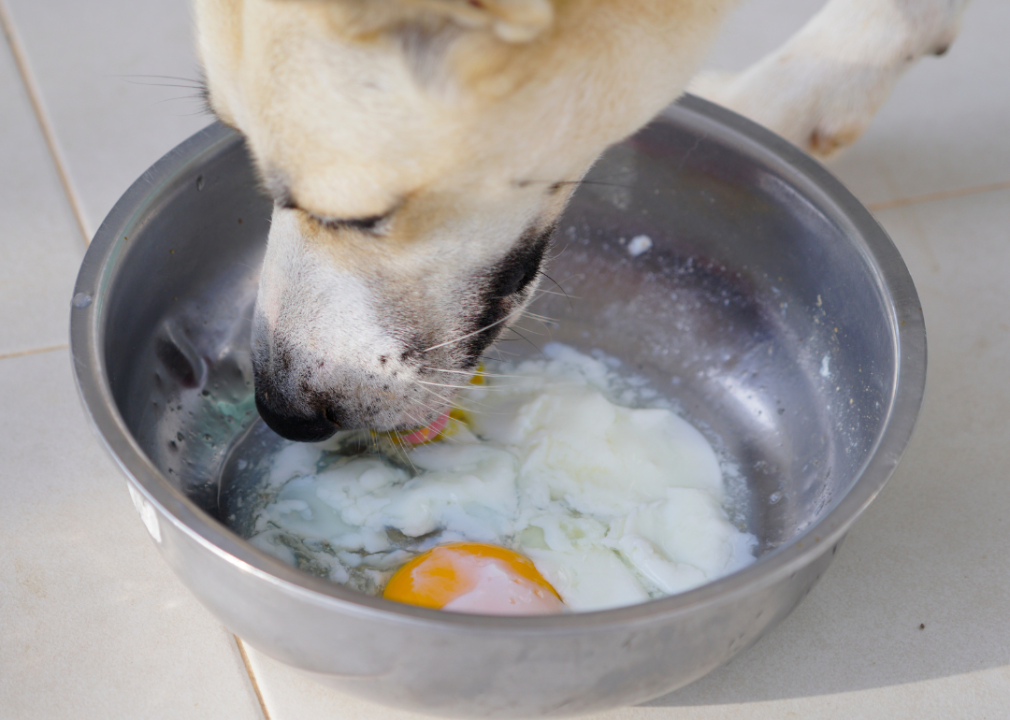
KPhrom // Shutterstock
Eggs
Eggs are one of the most nutrient-dense foods available. They are packed with amino acids, fatty acids, and vitamins, and are an excellent source of nutrients for dogs—though, the source of the egg does make a difference. Eggs from free-range or pastured chickens are healthier and rich in vitamins and minerals.
Eggs are easy to digest, which is helpful for dogs with sensitive stomachs, and they can help keep dogs’ coats shiny and sleek. Large dogs can have an entire egg daily, while smaller dogs should be limited to one small egg per week and no more than 1/4 of an egg each day. There are some restrictions on eating eggs for dogs with pre-existing health conditions like acute pancreatitis or diabetes. It’s best to run it by a veterinarian before feeding your dog eggs.
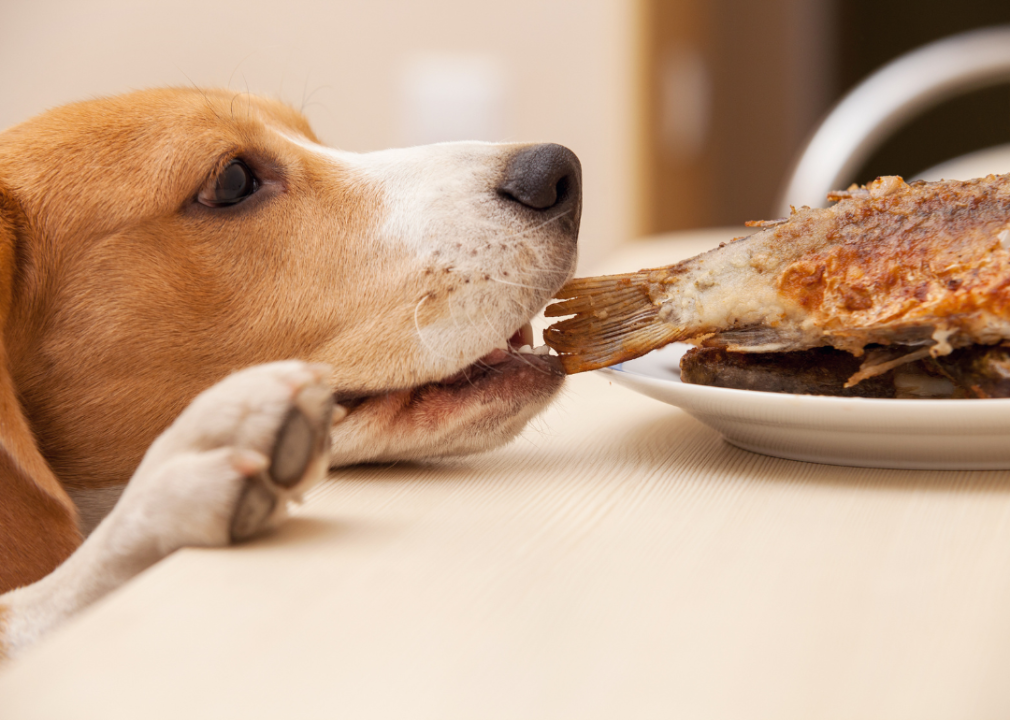
Soloviova Liudmyla // Shutterstock
Fish (cooked)
Fish can be a nutritious addition to a dog’s diet, but only certain types of fish are healthy for dogs to eat. Fish can be an excellent source of protein that is easily digestible for dogs, particularly those prone to upset stomachs. It is also an excellent alternative for dogs with allergies or intolerances to common pet food ingredients such as chicken.
Because it is relatively low in saturated fats, it’s a great option for dogs on a weight loss diet and is also rich in omega-3 fatty acids, which reduce inflammation and keep the skin and coat healthy. Fish contain vitamins and minerals that strengthen dogs’ immune systems and can contribute to joint health. But be warned: Fish must be cooked without any additional oil or seasoning.
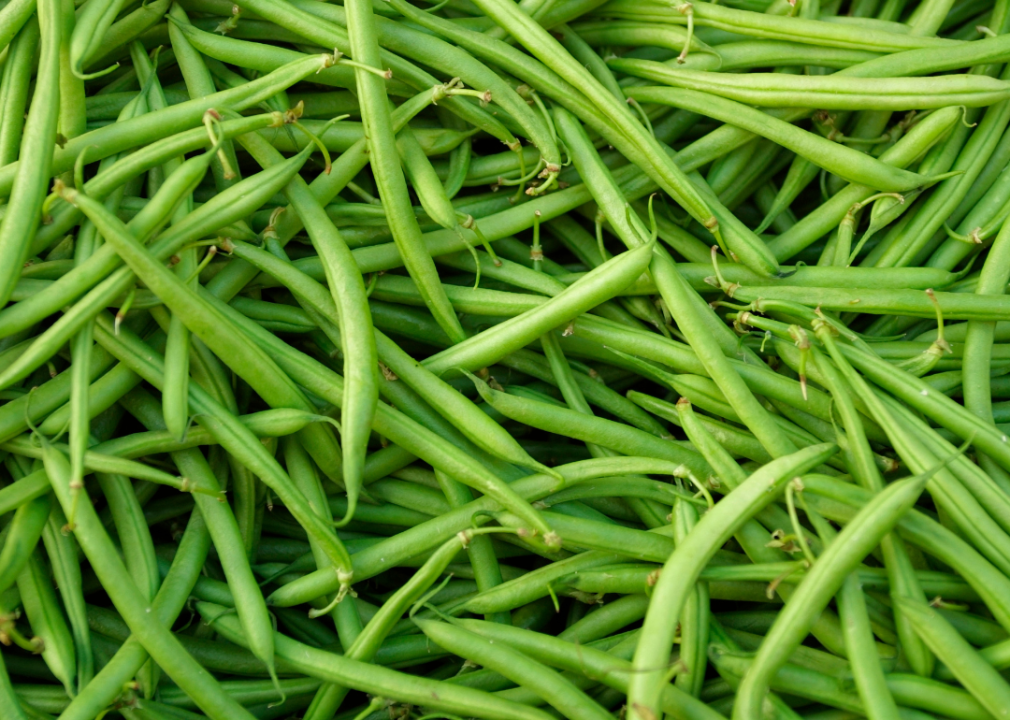
Canva
Green beans
Green beans are not only safe for dogs to eat, vets recommend them as a nutritious snack as well. They are full of essential vitamins and minerals like protein, iron, calcium, and vitamins B6, A, C, and K. They are the perfect snack for keeping a dog in shape; they are full of fiber and low in calories.
The “green bean diet” is a healthy trend that helps dog owners keep their dogs fit by substituting 10% of dog food with green beans. After every two days, they increase the amount by 10% until half of the dog’s dry food has been replaced with green beans. Dogs can be fed green beans chopped, steamed, or raw as long as they are plain.
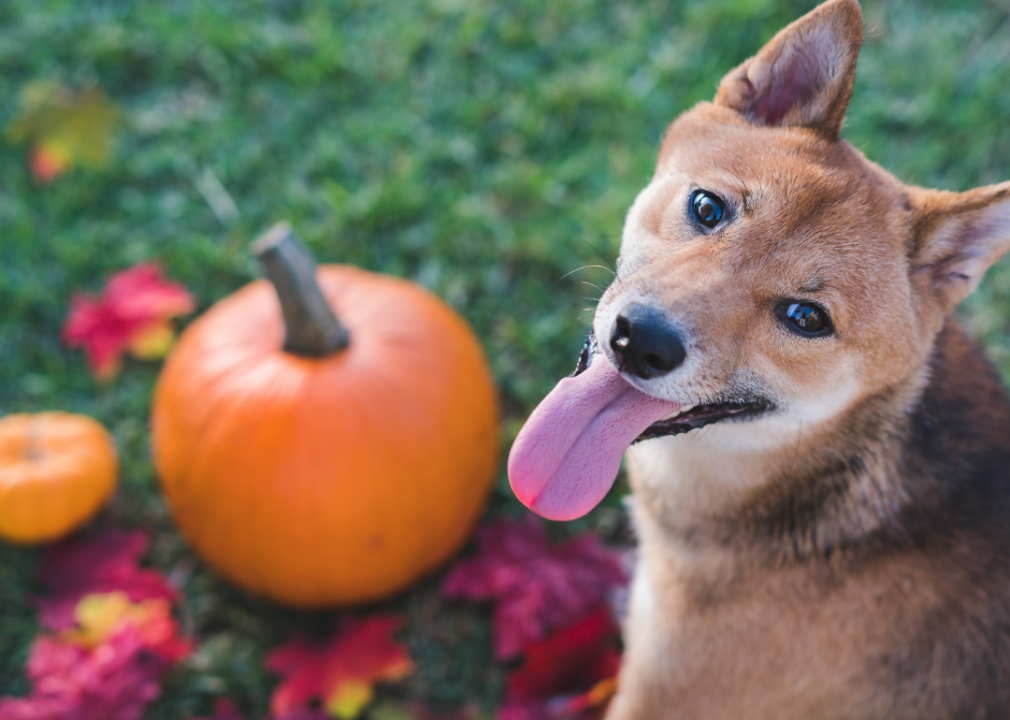
NancyP5 // Shutterstock
Pumpkin
Pumpkin is high in fiber and vital micronutrients, making it an exceptionally healthy snack. Pumpkin contains vitamins A, C, and E, as well as minerals like iron and potassium. What’s more, pumpkin seeds contain the amino acid cucurbitin, which paralyzes and eliminates parasites in your dog’s digestive tract.
Pumpkin is a natural stomach soother and helps remove excess water in the digestive tract. Adding pumpkin is also a healthy way to bulk out a dog’s diet without adding many calories. Adding between 1-4 tablespoons of pumpkin per meal to a large dog's diet is adequate to avoid adding too much fiber while meeting the dog’s nutritional needs. For smaller dogs, the max amount should be 1/2 teaspoon daily.
This story originally appeared on Native Pet and was produced and distributed in partnership with Stacker Studio.
